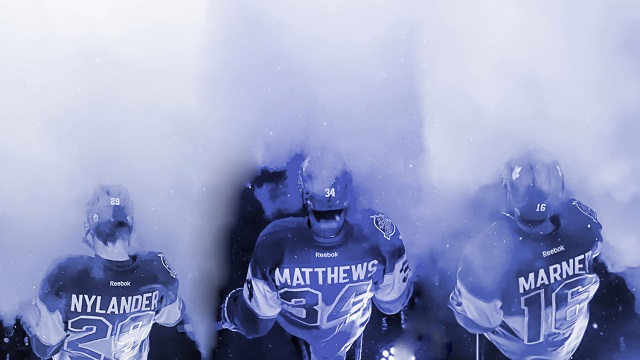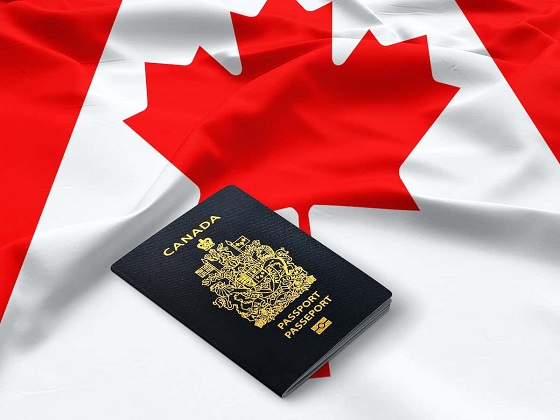Opinion
Two thirds of our city has declined in City Council’s last mandate. Is the at-large system really working?

No it is not just the north side of the river which is seeing a decline in population, but there are also about 18 declining neighbourhoods south of the river, too. During their 4 year mandate this council did see growth in a few select neighbourhoods.
Garden Heights……………………….2016=381.……..2013=36
Timberlands/College Heights…….…2016=2215.……..2013=864
Clearview Ridge………………………2016=1706.……..2013=1177
Vanier………………………………….2016=3630.……..2013=2019
Sunnybrook…………………………2016=1119.……….2013=856
Lancaster…………………………….2016=6356.………2013=5738
Mountview……………………………2016=1550.………2013=1538
Michener Hill…………………………2016=1511.………2013=1454
Eastview Terrace……………………..2016=1664.………2013=1654
Eastview Estates………………………2016=2455.….….2013=2455
Deerpark Village………………………2016=3720.……..2013=3715
Riverside Meadows……………..……2016=3686..……2013=3665
Johnstone Park………………………2016=3865.………2013=3760
Total…………………2016=33,858.….3013=28,931…increase of 4,927
The city’s total population only increased by2,723.
So besides north of the river, where did we lose residents? Let us continue to look at the census material on reddeer.ca.
So while 13 neighbourhoods’ population showed no decline or showed increases 25 neighbourhoods decreased.
Waskasoo—————————2016=474—-2013=486
Woodlea—————————–2016=553—-2013=606
Downtown————————–2016=3,197–2013=3283
Parkvale—————————–2016=795—-2013=813
Westpark—————————-2016=5430—2013=5514
South Hill West——————–2016=1582—2013=1712
South Hill East———————2016=1302—2013=1410
Bower——————————–2016=1953—2013=1991
Sunnybrook————————-2016=1411—2013=1430
Grandview————————–2016=950—-2013=1023
Clearview—————————2016=2547—2013=2754
Rosedale—————————–2016=3386—2013=3482
Morrisroe—————————2016=1274—-2013=1279
Morrisroe Ext.———————2016=1643—2013=1782
Anders Park————————2016=2967—2013=3101
Anders South, Aspen Ridge—–2016=3884—2013=3911
Deerpark—————————-2016=3986—-2013=4072
Inglewood—————————2016=4334—2013=4481
So basically the city grew in only 34% of the neighbourhoods, some by a bare margins others with whole new subdivisions.
Will your neighbourhood be the next one to be forgotten? Will it be abandoned for next new neighbourhood? It might.
Business
Ottawa’s capital gains tax hike—final nail in ‘business investment’ coffin

From the Fraser Institute
By Tegan Hill and Jake Fuss
From 2014 to 2022, inflation-adjusted total business investment (in plants, machinery, equipment and new technologies but excluding residential construction) in Canada declined by C$34 billion. During the same period, after adjusting for inflation, business investment declined by a total of $3,748 per worker
According to the recent federal budget, the Trudeau government plans to increase the inclusion rate from 50 per cent to 66.7 per cent on capital gains over $250,000 for individuals and on all capital gains realized by corporations and trusts. Unfortunately, this tax hike will be the final nail in the coffin for business investment in Canada, which likely means even harder economic times ahead.
Canada already faces a business investment crisis. From 2014 to 2022, inflation-adjusted total business investment (in plants, machinery, equipment and new technologies but excluding residential construction) in Canada declined by C$34 billion. During the same period, after adjusting for inflation, business investment declined by a total of $3,748 per worker—from $20,264 per worker in 2014 to $16,515 per worker in 2022.
While business investment has declined in Canada since 2014, in other countries, including the United States, it’s continued to grow. This isn’t a post-COVID problem—this is a Canada problem.
And Canadians should be worried. Businesses investment is key for strong economic growth and higher living standards because when businesses invest in physical and intellectual capital they equip workers with the tools and technology (e.g. machinery, computer programs, artificial intelligence) to produce more and provide higher quality goods and services, which fuels innovation and higher productivity. And as firms become more efficient and increase profits, they’re able to pay higher wages, which is why business investment remains a key factor for higher incomes and living standards.
The Trudeau government’s policies—increased regulation, particularly in the energy and mining sectors (which makes Canada a relatively unattractive place to do business), higher and uncompetitive taxes, and massive federal deficits (which imply future tax increases)—have damaged business investment.
Unsurprisingly, weak business investment has correlated with a weak economy. In the fourth quarter of 2023, real economic growth per person ($58,111) officially fell below 2014 levels ($58,162). In other words, Canadian living standards have completely stagnated. In fact, over the last decade economic growth per person has been the weakest on record since the 1930s.
Instead of helping fix the problem, the Trudeau government’s capital gains tax hike will further damage Canada’s economy by reducing the return on investment and encouraging an exodus of capital from the country. Indeed, capital gains taxes are among the most economically-damaging forms of taxation because they reduce the incentive to invest.
Once again, the Trudeau government has enacted a policy that will deter business investment, which Canada desperately needs for strong economic growth. The key takeaway for Canadians? Barring a change in policy, you can expect harder times ahead.
Authors:
Bruce Dowbiggin
In Toronto The Leafs Always Fall In Spring: 2024 Edition

Who knew when we tuned in Saturday night to Hockey Night In Canada that we would be witnessing playoff history. Nay, not just playoff history but hockey history. According to what we saw and heard on HNIC just ONE TEAM played on Saturday. And they lost. It goes without saying that the team was HNIC’s beloved Toronto Maple Leafs.
Those of us who’d stuck with the telecast all evening could’ve sworn there was another team on the ice in black and gold. Rumour has it they were the Boston Bruins, but don’t quote us on that. Also, take it as a rumour that Boston’s 3-1 win gave them a 3-1 lead in games over Toronto heading back to Boston for what most expect will be the coup de grace for the blue and white. Again.
But when time came to discuss the game afterward the Toronto-based panel told us that the Leafs had beaten themselves. Yes, in some hockey version of metaphysics Toronto had transcended the third dimension. The Bruins were like The Fugitive, lurking far out of sight. Brad Marchand had had nothing to do with breaking up Toronto’s neutral-zone speed nor Charlie McAvoy clearing the front of their net. Jeremy Swayman, who he?

Instead the talking heads dissected the loss in shades of blue.
For those who were washing their hair or another vital task on Saturday, the Leafs had more story lines than a season of Curb Your Enthusiasm (insert your joke here), They finally got their migraine-afflicted star William Nylander back in the fold before a delirious Scotiabank crowd who’d probably paid about a $1000 a ticket to attend. But their star sniper Auston Matthews (allegedly) had food poisoning or a gall stone or a tee time next week back home in Scottsdale. Hard to say.
There was also a goaltending controversy, a Mitch Marner controversy and a Keith Pelley controversy (more on MLSE’s new CEO in a moment). And the, you know, 1967 thing. Despite the hysteria of their long-suffering fans at puck drop, postgame analysts hinted the Leafs seemed to be disinterested. Or, to those who actually watched the game, they were schooled by a better Boston team.
By the middle of the second period, despond and a 3-0 deficit had settled on the Leafs. Despite being the ONLY TEAM on the ice their well-compensated stars were bitching at each other on the bench. While Matthews looked glumly at his pals, Marner had a hissy fit throwing his gloves to the floor. Nylander lip-synched a rebuke to Marner along the lines of Grow up, this ain’t junior hockey. Did we say the crowd booed them off the ice after the second period? Yeah, that too.

Which led mild-mannered Kelly Hrudey to scold Marner for a bush-league behaviour in the break. Remember, Hrudey’s the nice guy on the HNIC panel. Where others see an alligator chomping on their leg Kelly sees a chance to get up-close with nature. So the rebuke for Marner was incendiary. By the time they dropped the pick for the third period you’d have thought Bob Cole wasn’t the only person to pass away this week. Gloom.
Making matters worse, Matthews was nowhere to be found. (According coach Keefe, the doctors had pulled him from the game. Whatever.) When the contest ended with a Toronto loss, the postgame chatter was once more obsessed with Toronto’s failings, as if another team were not having its way on the ice. Where was the effort? Where was the intensity promised when Leafs management spread dollars like Easter candy among its Core Four?
Kevin Bieksa, typically the most salty one on the panel, reminded everyone there was a Game 5 Monday and that 3-1 leads have been overcome. But with Toronto’s success in comebacks being nil he sounded like a guy trying to sell you a penny mining stock.
The dressing-room afterward was mint. “You know what, that’s just the way we are,” Nylander said. “I mean we expect a lot from each other, and we love each other.”
“I don’t think there’s any (frustration),” Marner added unconvincingly. “We’re grown men. We were talking about plays out there that we just want to make sure we’re all 100 percent on and know what we’re doing… We’re not yelling at each other because we hate each other.”
Chris Johnston of The Athletic called it the end of the Maple Leafs as we know them. “They’re making more mistakes at five-on-five, they’re soundly losing the special-teams battle, and they’ve transformed from being one of the NHL’s best offensive teams in the regular season to one that can’t score more than two goals per night in the playoffs. Wash, rinse, repeat.”
Coach Sheldon Keefe, whose shelf life has about 60 minutes left, was enigmatic in the face of cruel destiny. “You can question a lot of things; you can’t question the effort,” he said.
He’s right about one thing. When this first-round ends in ignominy there will be plenty of questions from Pelley, newly installed at the top of the MLSE pyramid. Such as, why should I keep this management team that teases Waygu beef in-season but delivers ground chuck in the playoffs? It’s long been said that the league the Leafs have been built for doesn’t exist in the postseason. So why keep pretending it does?
For those not in the know, Pelley has spent the last few years dealing with the Saudi’s LIV golf enterprise in his role as CEO of what used to be known as the European Tour. (Insert your barbarism reference) So he’s used to dealing with nasty situations.
Maybe his first act on the Leafs file is reminding everyone that two teams play each other in the playoffs, and it might be a good idea to learn from what the winners are doing.
Bruce Dowbiggin @dowbboy is the editor of Not The Public Broadcaster A two-time winner of the Gemini Award as Canada’s top television sports broadcaster, he’s a regular contributor to Sirius XM Canada Talks Ch. 167. Now for pre-order, new from the team of Evan & Bruce Dowbiggin . Deal With It: The Trades That Stunned The NHL & Changed Hockey. From Espo to Boston in 1967 to Gretz in L.A. in 1988 to Patrick Roy leaving Montreal in 1995, the stories behind the story. Launching in paperback and Kindle on #Amazon this week. Destined to be a hockey best seller. https://www.amazon.ca/Deal-Trades-Stunned-Changed-Hockey-ebook/dp/B0D236NB35/
-

 Business2 days ago
Business2 days agoHonda deal latest episode of corporate welfare in Ontario
-

 Automotive2 days ago
Automotive2 days agoThe EV ‘Bloodbath’ Arrives Early
-

 CBDC Central Bank Digital Currency1 day ago
CBDC Central Bank Digital Currency1 day agoA Fed-Controlled Digital Dollar Could Mean The End Of Freedom
-

 Brownstone Institute1 day ago
Brownstone Institute1 day agoThe Numbers Favour Our Side
-

 Frontier Centre for Public Policy1 day ago
Frontier Centre for Public Policy1 day agoHow much do today’s immigrants help Canada?
-

 Fraser Institute7 hours ago
Fraser Institute7 hours agoFederal government’s fiscal record—one for the history books
-

 Alberta6 hours ago
Alberta6 hours agoPrincipal at Calgary Elementary School charged with possession of child pornography
-

 Bruce Dowbiggin6 hours ago
Bruce Dowbiggin6 hours agoIn Toronto The Leafs Always Fall In Spring: 2024 Edition










